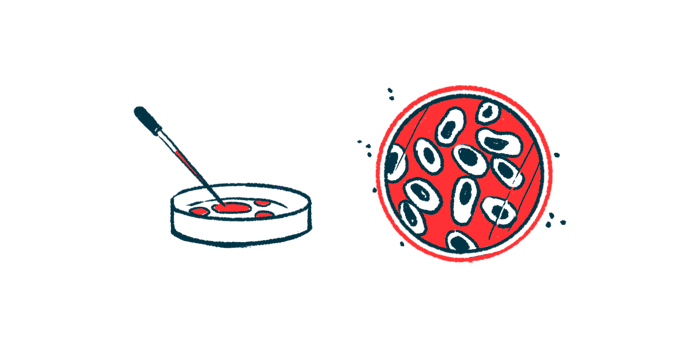ETS1 Protein Powers Up MMP-9 in Salivary Glands in Sjögren’s, Sicca Patients
Both proteins implicated in dryness symptoms, early Sjögren’s development

A protein called ETS1 is present in large amounts in cells in the salivary glands of patients with Sjögren’s syndrome, where it may turn on a switch to make more of MMP-9, another protein that has been implicated in the early development of the disease, a study found.
Researchers also observed that ETS1 powered up MMP-9 in cells from patients with dryness symptoms (sicca), but who did not meet other criteria for a diagnosis of Sjögren’s.
According to the team, discovering the mechanisms behind what causes ETS1 to trigger MMP-9 “could provide new therapeutic targets to reduce salivary gland degradation.”
The study, “Regulation of MMP9 transcription by ETS1 in immortalized salivary gland epithelial cells of patients with salivary hypofunction and primary Sjögren’s syndrome,” was published in the journal Scientific Reports.
Sjögren’s is caused by the immune system mistakenly attacking healthy tissues in the body. Because these attacks usually target the glands that make tears and saliva, patients often experience dry eyes and a dry mouth as key disease symptoms.
Uncovering disease mechanisms in Sjögren’s
It is not clear what causes the immune system to go haywire in Sjögren’s. But it is possible that the extracellular matrix — a mesh-like network of molecules that surrounds and provides structure to tissues — gets broken down even before immune cells enter the tissues they attack. The extracellular matrix also is involved in tissue repair following damage.
MMP-9 is a member of a group of proteins called matrix metalloproteinases that can break down components of the extracellular matrix. The salivary glands of people with Sjögren’s are rich in MMP-9.
In fact, the more MMP-9 Sjögren’s patients have, the worse their disease tends to be. But what makes the levels of MMP-9 increase in these patients in the first place remains unknown.
To learn more, a team of researchers in the U.S. grew epithelial cells from the salivary glands of 23 patients with Sjögren’s or sicca — extreme dryness of the eyes and mouth. All were women, and their ages ranged from 31 to 78.
The focus score in Sjögren’s is a measure of the number of clumps of white blood cells, a type of immune cells, forming inside the salivary glands. That score helps in making a disease diagnosis.
Nine of the patients had a focus score equal to or greater than one, and were said to have Sjögren’s. Nine other patients had a focus score greater than zero, but smaller than one, and were considered to have sicca with white blood cell clumps. The remaining five patients had a focus score of zero and were said to have sicca.
Researchers already knew that ETS1, a protein that can switch certain genes on or off, also exists at high levels in the salivary glands of patients with Sjögren’s. It’s also the same areas where MMP-9 is present.
Both ETS1 and MMP-9 were found at higher levels in lab-grown cells from patients with Sjögren’s or sicca with white blood cell clumps than in those from patients with sicca without white blood cell clumps. The team also determined that the levels of ETS1 correlated with those of MMP-9. That means the higher the levels of ETS1, the higher those of MMP-9.
Next, researchers used siRNA — a type of RNA that can prevent proteins from being made — to tone down the levels of ETS1 in lab-grown cells. RNA is the molecule that cells typically use as a template to make proteins.
While watching for changes in MMP-9, the scientists found a reduction in both the levels of RNA and protein.
Conversely, when cells were engineered to make more ETS1, they also made more MMP-9. The levels of several factors that may play a role in the process of fibrosis (scarring) of the salivary glands also changed after cells were induced to make more ETS1.
A deeper look into how ETS1 and MMP-9 might interact revealed that ETS1 binds to the promoter region of the gene coding for MMP-9. A promoter is a special region within a gene’s DNA sequence where specific factors can bind to turn that gene on.
“ETS1 may impair salivary function” by binding to the promoter region of the MMP-9 gene. It may also drive changes in “other factors involved in repair” of the damaged salivary glands, the researchers noted.







